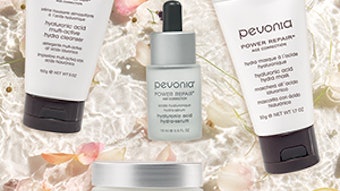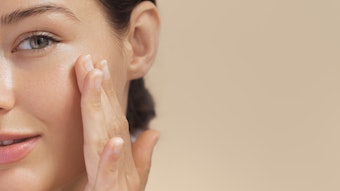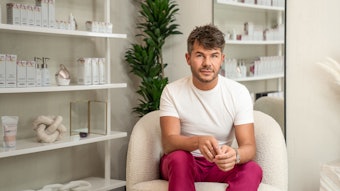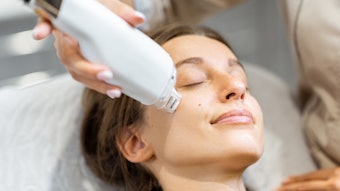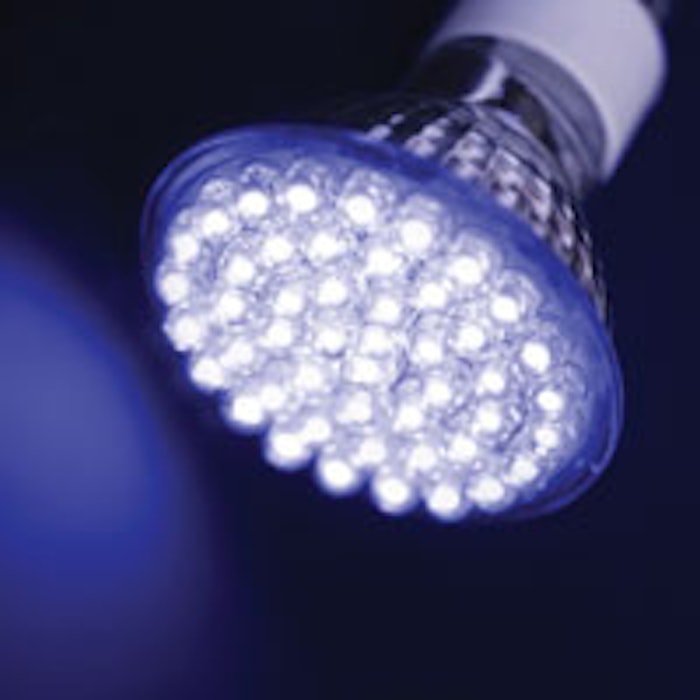
Skin rejuvenation devices, both in the skin care facility and at-home, are becoming a must-have for savvy skin care clients. By understanding the purposes of the various device options, what they are purported to do and who can operate them, you can decide whether to incorporate skin rejuvenation devices into your menu of services, and which ones will work best for your clients ... and your skin care professionals.
Physician’s point of view: Steven H. Dayan, MD, FACS
Device-based nonsurgical cosmetic procedures are growing at an exorbitant rate, far surpassing the growth of cosmetic surgical procedures. Today’s clients want to undergo procedures that will make them look good fast, and they do not want the downtime, the risks or the perceived inconveniences that come with surgery. Since the late 1990s, the medical industry has responded to this demand by developing several new technologies. The creation and promotion of these devices and products has been rapid and, at times, the enthusiasm for new devices has outpaced the promised results.
In the face and neck region, nonsurgical treatments aimed at treating the dermal structures are important to achieve complete rejuvenation and are frequently used in tandem with surgical treatments. The technique for working in this area is now known as dermal remodeling, skin-tightening or nonablative skin rejuvenation, during which no damage is made to the outer layers of skin. In nonablative treatments, all injury is taking place in the lower layers of the skin and nothing is seen on the surface. This method is commonly used to stimulate collagen reformation below the skin’s surface without burning the top layers of the skin, as ablative lasers do. The most popular of the medical devices used for nonablative skin rejuvenation are visible light lasers, intense pulsed light (IPL) and radio frequency.
Visible light lasers and IPL. Initially, visible light lasers and IPL devices were used to achieve skin-tightening. The prevailing theories regarding these devices was that specifically designed lasers in the mid-to-near infrared spectrum of light will skip over the outer layers of skin, and penetrate deep into the dermis where they deposit energy and denature proteins. This heat then stimulates collagen proliferation, resulting in a thickening of the healthy skin layers, gradually ridding the skin of superficial wrinkles. A second idea is that, by targeting and injuring microcapillaries, visible light lasers and IPLs will increase the permeability of these tiny dermal vessels, prompting the release of inflammatory mediators. These mediators then stimulate fibroblasts to produce collagen, which also results in wrinkle reduction.
Although there is no doubt that IPL and visible light laser devices improve the appearance of dyschromias—brown and red discolorations of the skin—their ability to remove wrinkles and tighten skin is less consistent. Patients expecting wrinkle-reduction from these devices often need several treatments to see results; at least four to six treatments performed on a monthly basis are recommended. Those undergoing the treatments must be patient, because improvements on the skin’s surface will be gradual and subtle. Collagen formation continues for months following treatments, after which patients can expect a smoother and healthier-looking facial appearance.
Radio frequency. Radio frequency is another thermal device that is used to reduce the signs of aging by producing a tightening effect. These devices emit energy in the form of electromagnetic waves that heat up the dermis, causing collagen stimulation and tightening. This treatment is most commonly used for sagging skin, fine lines and age-prevention. During the service, the epidermis is protected with a cooling device that prevents the skin from overheating as the energy is directed to the deeper dermis. Because the heat is nonspecific, there is little risk to those with darker skin types. Therefore, unlike IPL and visual light lasers where light is attracted to color, this device can be used safely on all skin types.
The heat from radio frequency treatments causes some contraction of the skin that can be seen immediately; however, most skin-tightening becomes evident by four to six weeks, and continues throughout the next three to 12 months. Because the amount of tissue tightening is subtle, it can sometimes be difficult to see even the best results. Some providers recommend that patients be warned that they may not experience noticeable results after, or they may see only modest improvements. Patients must be thoroughly educated on what they can expect with this procedure, and understand that it is not comparable to a face lift, as some equipment manufacturers claim.
Esthetician’s point of view: Terri A. Wojak
There are now several devices available that can be used for skin rejuvenation by skin care professionals, as well as devices that the client can use at home. Although the at-home treatments use less energy, they are still effective for certain skin conditions and can be utilized to maintain the results of medical treatments. As with all treatments, clients must be educated properly, and it is important for them to know that several services performed more frequently will likely be needed to achieve the desired results. Some of the more popular skin rejuvenation devices used by skin care professionals include ultrasound, light-emitting diode (LED) and microcurrent.
Ultrasound. Ultrasound is a noninvasive procedure that utilizes a rapidly oscillating handpiece to create sound waves that are conducted to the epidermal skin tissues through a water-based gel. The physiological benefits of ultrasound are categorized as thermal and nonthermal.
Thermally, ultrasound waves can cause local tissues to heat up to 40–45°C or 104–113°F, which seems to be the magic temperature for stimulating collagen production.
The nonthermal nature of ultrasound acts to create microscopic bubbles of blood—known as cavitation—as well as lymphatic and tissue fluids, which act to increase the cell membrane’s permeability and calcium intake. All of this helps in wound repair and collagen production. This is why ultrasound is often used pre- and post-operatively, to accelerate the healing process by reducing inflammation and swelling. Cavitation can also help deliver specific products into the skin through a process known as phonophoresis. Overall, ultrasound results in a rejuvenated appearance, which makes it an excellent choice for clients who want a quick, relaxing procedure with no downtime.
LED. LED is a mild form of light therapy that has been shown to produce results with certain skin conditions. It uses significantly less energy than laser or IPL; it is actually the light used in alarm clocks and produces no heat. This makes it a safer and more comfortable option than some of the medical light therapies, including IPL and lasers. As with the other treatments, results are individual; some clients may see visible results sooner than others, depending on how their skin reacts to the light therapy.
There are several different colors used. The blue light is superficial and is beneficial for targeting Propionibacterium acnes, which is one of the main culprits for acne. Blue LED is often used in conjunction with a service known as photodynamic therapy for acne clients, which incorporates the use of a photosensitizing agent that is applied to the skin before the use of light therapy so that the skin reacts more effectively to the light source. LED in the yellow-to-orange range is used for collagen stimulation and prevents loss of elasticity. The red light is commonly used for healing and to reduce inflammation, which makes it a great option for all skin types.
Microcurrent. Microcurrent is becoming increasingly popular in many medical offices as well as skin care facilities. It is a low level of electrotherapy that helps to tone the muscles in the skin, as well as increase circulation, resulting in a more youthful appearance. A neurotoxin stops the muscle movement, and microcurrent does the exact opposite—it essentially acts as a workout for your facial muscles. The idea is to re-train the muscles while strengthening them with repeated treatments. Microcurrent services may be most effective in a medical office when packaged with other more invasive services to perfect the client’s results. Some microcurrent clients say they see a result immediately after the treatment; however, the problem with that is, although there is instant gratification, these results tend to dissipate early. This is why many of these devices are sold for at-home use; treatments should be performed three to five days a week for best results.
It is important to understand the ultimate goal of a cosmetic esthetic client. Client expectations must be managed appropriately, and the procedures must be reasonably priced. Exaggerated definitions of “nonsurgical face lifting” may leave clients with the impression that such services can replace surgical procedures. Although objective skin-tightening is frequently reported, clients expecting a surgical-type result will be disappointed with the subtle results. It is recommended that if a cosmetic device does not reliably achieve a client satisfaction rate of 90% or higher, it should not be offered. It is incumbent upon the discerning skin care professional to carefully evaluate and become familiar with all the available technologies, even if the treatment can only be performed by a medical professional.
Marketing point of view: Tracy L. Drumm
When launching devices in your skin care facility, education is crucial in its ability to lead to appointments. Following are steps to take in order to foster that education among your clients.
Clean house and display your facts. It’s time to ditch the dirt … the celebrity dirt, that is. Throw away those gossip magazines and instead, replace them with educational materials. Brochures, photo albums, even white papers will all better serve your clients than news of Hollywood scandals. It’s a good idea to keep an issue of the latest Glamour on hand for loyal patients who see you monthly, but as a general rule, keep your reception area focused on facts about you, your services and new treatments. Turning the time a client spends at your spa or medical facility into an educational opportunity will help ensure they are aware of all you offer.
400 rule. Often running a medical spa can resemble a scene from the movie Groundhog Day, where the same actions are repeated every week. The key to turning each client’s visit into a learning opportunity is to apply the 400 rule. As a provider, it may be the 400th time you have said something, but it is likely the first time the client is hearing it. Repeat what is routine as if it is the first time you are saying it, even though it may be the 400th. Remembering this simple rule is an easy way to ensure that every client learns about new treatments or devices available at your facility.
Pass the credentialing baton. Imagine that your receptionist has a baton. Her job is to pass this baton to the next staff member through a credentialing statement. The idea behind this concept is that each team member leaves the client with a fact about the next team member she will be seeing during her time at the skin care facility. These little facts that are “handed off” from the receptionist, to the esthetician, to the officer manager are an easy way to reinforce the training, expertise and credentials of your entire facility. For example, when the person in charge of checking in clients escorts them back to the treatment room, she can share facts about the provider they are about to see. Statements about training, the number of treatments an esthetician has performed or simply commenting on the provider’s attention to detail will surely leave the a client with a positive and lasting impression.
Steven H. Dayan, MD, FACS, is an expert in the field of facial plastic surgery and is a member of the American Academy of Facial Plastic and Reconstructive Surgery. His passion for education led him to open True University Esthetics in Chicago, a training center that teaches estheticians how to appropriately work with physicians. Dayan is a 2012–2013 member of the Skin Inc. magazine editorial advisory board.
Tracy L. Drumm manages the day-to-day operations of IF Marketing, a Chicago firm specializing in esthetic medicine. Drumm co-authored Keys to Success: Marketing & Practice Management (College of Cosmetic Medicine Press, 2007) and Thrive: Pearls to Prosper in Any Economy (College of Cosmetic Medicine Press, 2009).
Terri A. Wojak is a licensed esthetician with more than 14 years of experience. She has knowledge in all aspects of the skin care industry, including education, sales, medical esthetics, management and ownership, and she is the director, as well as an educator, at True University Esthetics in Chicago. The authors can be contacted at 312-335-2070 or via e-mail at [email protected].



